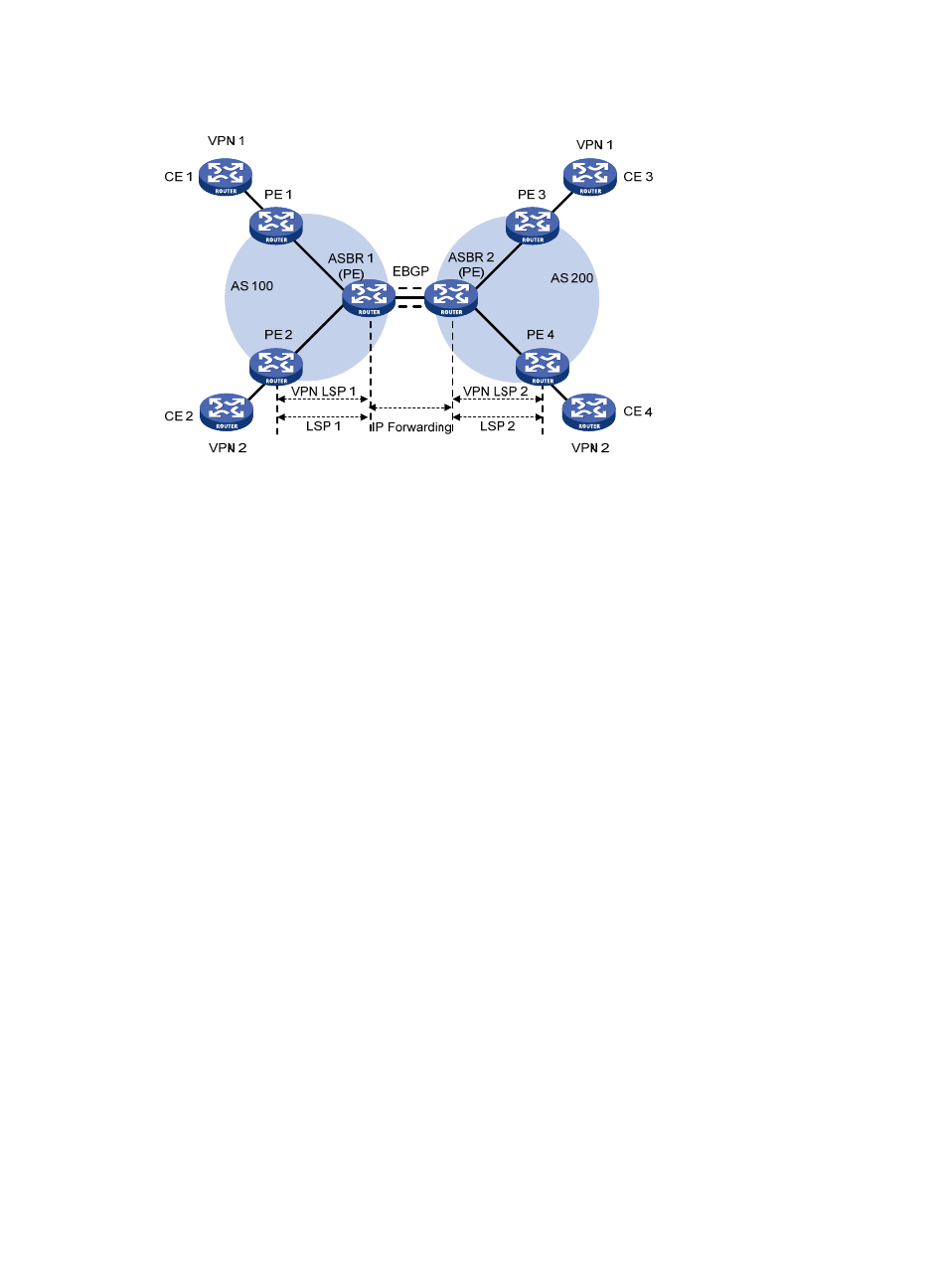Inter-as option b – H3C Technologies H3C SR8800 User Manual
Page 242

231
Figure 61 Network diagram for inter-AS option A
This kind of solution is easy to carry out because no special configuration is required on the PEs acting
as the ASBRs.
However, it has limited scalability because the PEs acting as the ASBRs have to manage all the VPN
routes and create VPN instances on a per-VPN basis. This leads to excessive VPN-IPv4 routes on the PEs.
Moreover, the requirement to create a separate subinterface for each VPN also calls for higher
performance of the PEs.
Inter-AS option B
In this kind of solution, two ASBRs use MP-EBGP to exchange labeled VPN-IPv4 routes that they have
obtained from the PEs in their respective ASs.
As shown in
, the routes are advertised through the following steps:
1.
PEs in AS 100 advertise labeled VPN-IPv4 routes to the ASBR PE of AS 100 or the route reflector
(RR) for the ASBR PE through MP-IBGP.
2.
The ASBR PE advertises labeled VPN-IPv4 routes to the ASBR PE of AS 200 through MP-EBGP.
3.
The ASBR PE of AS 200 advertises labeled VPN-IPv4 routes to PEs in AS 200 or to the RR for the
PEs through MP-IBGP.
The ASBRs must perform the special processing on the labeled VPN-IPv4 routes, also called ASBR
extension method.
